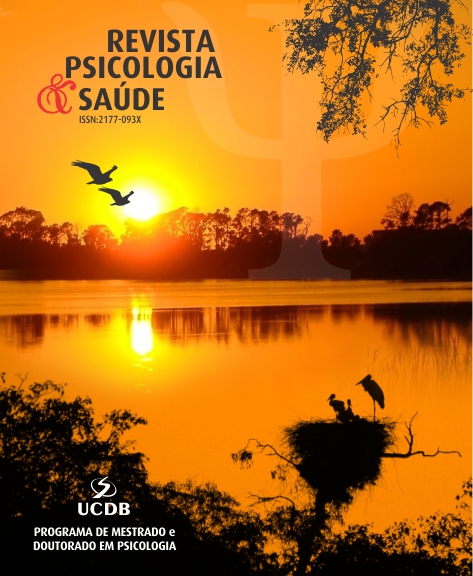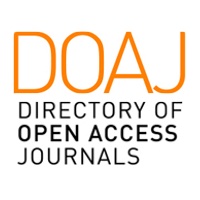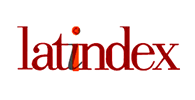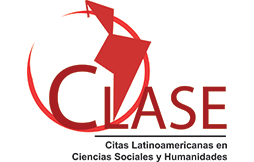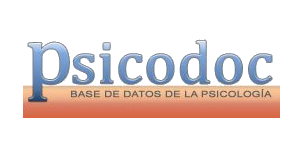Nutritional Status and Food Neophobia Among Children and Adolescents Assisted by a Non-Governmental Organization
DOI:
https://doi.org/10.20435/pssa.v16i1.2477Keywords:
child, adolescent, nutritional status, avoidant restrictive food intake disorder, organizationsAbstract
Introduction: food neophobia consists of resistance to trying new or different foods, which can lead to malnutrition, especially in childhood and adolescence. Aim: To analyze the nutritional status and the presence of food neophobia in children and adolescents assisted by a non-governmental organization. Methods: Cross-sectional study with a quantitative approach, carried out with 80 children and adolescents aged between 5 and 14 years. Guarantees were used to investigate the socioeconomic and health profile, food consumption and anthropometric measurements. The level of neophobia was measured by the Food Neophobia Scale. Student's t and Chi-Square tests were applied with a significance level of 5%. Results: Females accounted for 51.2% of the studied population and the mean age was 8.4 (± 2.31) years. The prevalence of overweight was 38.7%, of which 33.7% had food neophobia. The dietary pattern shows the significant presence of ultra-processed foods and low consumption of vegetables and fruits. Conclusion: The findings of this study showed a considerable percentage of overweight children and a significant presence of food neophobia. Thus, it becomes relevant to implement effective food and nutrition education actions with the aim of encouraging the promotion of adequate and healthy eating habits from childhood onwards.
References
Batista Filho, M., & Rissin, A. (2003). A transição nutricional no Brasil: Tendências regionais e temporais. Cadernos de Saúde Pública, 19(suppl 1), S181–S191. https://doi.org/10.1590/S0102-311X2003000700019
Bloch, K. V., Klein, C. H., Szklo, M., Kuschnir, M. C., Abreu, G. A., Barufaldi, L. A., Veiga, G. V., Schaan, B., & Silva, T. L. N. (2016). ERICA: prevalências de hipertensão arterial e obesidade em adolescentes brasileiros. Revista de Saúde Pública, 50(supl 1). https://doi.org/10.1590/S01518-8787.2016050006685
Botelho, G., & Lameiras, J. (2018). Adolescente e Obesidade: Considerações sobe a importância da educação alimentar. Acta Portuguesa de Nutrição, 15, 30–35. https://doi.org/10.21011/apn.2018.1506
Coelho, L. G., Cândido, A. P. C., Machado-Coelho, G. L. L., & De Freitas, S. N. (2012). Association between nutritional status, food habits and physical activity level in schoolchildren. Jornal de Pediatria, 88(5), 406–412. https://doi.org/10.2223/JPED.2211
Condessa, L. A., Chaves, O. C., Silva, F. M., Malta, D. C., & Caiaffa, W. T. (2019). Fatores socioculturais associados à atividade física de meninos e meninas: PeNSE 2012. Revista de Saúde Pública, 53(1), 1–13. https://doi.org/10.11606/S1518-8787.2019053000516
Cooke, L., Carnell, S., & Wardle, J. (2006). Food neophobia and mealtime food consumption in 4-5 year old children. International Journal of Behavioral Nutrition and Physical Activity, 3(14), 1–6. https://doi.org/10.1186/1479
Cooke, L. J., & Wardle, J. (2005). Age and gender differences in children’s food preferences. British Journal of Nutrition, 93(5), 741–746. https://doi.org/10.1079/BJN20051389
De Medeiros, A. J., Lima, J. S., Cardoso, V. V. B. P., & De Araújo Palmeira, P. (2020). Longitudinal monitoring of the nutritional status of schoolchildren in a public school. Journal of Human Growth and Development, 30(2), 209–215. https://doi.org/10.7322/JHGD.V30.10367
De Onis, M., Onyango, A. W., Borghi, E., Siyam, A., Nishida, C., & Siekmann, J. (2007). Development of a WHO growth reference for school-aged children and adolescents. Bulletin of the World Health Organization, 85(9), 660. https://doi.org/10.2471/BLT.07.043497
Della Torre, A. C. C., Marques, D. V. B., Nogueira, D. A., De Brito, T. R. P., & Lima, D. B. (2022). Food consumption in early childhood: Contribution to food and nutritional surveillance. Journal of Human Growth and Development, 32(3), 193–203. https://doi.org/10.36311/JHGD.V32.10249
Dovey, T. M., Staples, P. A., Gibson, E. L., & Halford, J. C. G. (2008). Food neophobia and ‘picky/fussy’ eating in children: A review. Appetite, 50(2–3), 181–193. https://doi.org/10.1016/J.APPET.2007.09.009
Germano, A., Alckmin-Carvalho, F., Jovem, A., & Bergamo, J. (2022). Association between prematurity and feeding difficulties in infancy: Systematic review. Research, Society and Development, 11(13), e52111335190. http://dx.doi.org/10.33448/rsd-v11i13.35190
Grillo, L. P., Ramos Schiffer, L., Klann, L., Mezadri, T., & Lynce Valle De Lacerda, L. (2018). Relationship between nutritional status and screen time in adolescents. Adolescência & Saúde, 15(2), 65–71.
Instituto Brasileiro de Geografia e Estatística. (2008). Pesquisa de Orçamentos Familiares 2008–2009: Antropometria e Estado Nutricional de Crianças, Adolescentes e Adultos no Brasil. IBGE.
Instituto Brasileiro de Geografia e Estatística. (2017). Pesquisa Nacional por amostra de domicílios (PNAD): Práticas de Esporte e atividade física: 2015. https://biblioteca.ibge.gov.br/visualizacao/livros/liv100364.pdf
Jebeile, H., Kelly, A. S., O’Malley, G., & Baur, L. A. (2022). Obesity in children and adolescents: Epidemiology, causes, assessment, and management. The Lancet Diabetes & Endocrinology, 10(5), 351–365. https://doi.org/10.1016/S2213-8587(22)00047-X
Leão, J. I. S., Queiroz, M. F. M., Freitas, F. M. N. O., & Ferreira, J. C. S. (2022). Formação de hábitos alimentares na primeira infância. Research, Society and Development, 11(7), e47711730438. https://doi.org/10.33448/RSD-V11I7.30438
Llewellyn, A., Simmonds, M., Owen, C. G., & Woolacott, N. (2016). Childhood obesity as a predictor of morbidity in adulthood: A systematic review and meta-analysis. Obesity Reviews, 17(1), 56–67. https://doi.org/10.1111/OBR.12316
Łoboś, P., & Januszewicz, A. (2019). Food neophobia in children. Pediatric Endocrinology Diabetes and Metabolism, 25(3), 150–154. https://doi.org/10.5114/PEDM.2019.87711
Lopes, W. C., Pinho, L. de, Caldeira, A. P., & Lessa, A. do C. (2020). Consumption of ultra-processed foods by children under 24 months of age and associated factors. Revista Paulista de Pediatria, 38. https://doi.org/10.1590/1984-0462/2020/38/2020139
Maranhão, H. S., Aguiar, R. C., Lira, D. T. J., Sales, M. Ú. F., & Nóbrega, N. Á. N. (2018). Dificuldades alimentares em pré-escolares, práticas alimentares pregressas e estado nutricional. Revista Paulista de Pediatria, 36(1), 45–51. https://doi.org/http://dx.doi.org/10.1590/1984-0462/;2018;36;1;00004
Melo, K. S., Silva, K. L. G. D., & Santos, M. M.. (2019). Avaliação do estado nutricional e consumo alimentar de pré-escolares e escolares residentes em Caetés-PE. Revista Brasileira de Obesidade, Nutrição e Emagrecimento, 12(76), 1039–1049. https://doi.org/10.7322/JHGD.73455
Mendes, L. L., Campos, S. F., Malta, D. C., Bernal, R. T. I., De Sá, N. N. B., & Velásquez-Meléndez, G. (2011). Validade e reprodutibilidade de marcadores do consumo de alimentos e bebidas de um inquérito telefônico realizado na cidade de Belo Horizonte (MG), Brasil. Revista Brasileira de Epidemiologia, 14(SUPPL. 1), 80–89. https://doi.org/10.1590/S1415-790X2011000500009
Ministério da Saúde. (2014). Guia alimentar para a população brasileira (2ª ed.). https://doi.org/10.1007/978-3-540-72604-3_154
Ministério da Saúde. (2022). Guia para a Organização da Vigilância Alimentar e Nutricional na Atenção Primária à Saúde. http://bvsms.saude.gov.br/bvs/publicacoes/guia_organizacao_vigilancia_alimentar_nutricional.pdf
Ministério da Saúde. (2023). Política Nacional de Alimentação e Nutrição (1ª ed).
Muniz, L. C., Zanini, R. V., Schneider, B. C., Tassitano, R. M., Feitosa, W. M. N., & González-Chica, D. A. (2013). Prevalência e fatores associados ao consumo de frutas, legumes e verduras entre adolescentes de escolas públicas de Caruaru, PE. Ciência & Saúde Coletiva, 18(2), 393–404. https://doi.org/10.1590/S1413-81232013000200011
Olabi, A., Najm, N. E. O., Baghdadi, O. K., & Morton, J. M. (2009). Food neophobia levels of Lebanese and American college students. Food Quality and Preference, 20(5), 353–362. https://doi.org/10.1016/J.FOODQUAL.2009.01.005
Pelegrini, A., Bim, M. A., De Souza, F. U., Kilim, K. S. S., & Pinto, A. A. (2021). Prevalence of overweight and obesity in brazilian children and adolescents: A systematic review. Revista Brasileira de Cineantropometria e Desempenho Humano, 23(e80352), 1-19. https://doi.org/10.1590/1980-0037.2021V23E80352
Previato, H. D. R. A., & Behrens, J. H. (2015). Translation and Validation of the Food Neophobia Scale (FNS) to the Brazilian Portuguese. Nutrición Hospitalaria, 32(2), 925–930. https://doi.org/10.3305/nh.2015.32.2.9108
Previato, H. D. R. A., & Behrens, J. H. (2017). Taste-related factors and food neophobia: Are they associated with nutritional status and teenagers’ food choices? Nutrition, 42, 23–29. https://doi.org/10.1016/J.NUT.2017.05.006
Previato, H. D. R. A., & Behrens, J. H. (2018). Nutritional status and food pattern of adolescents. Nutrition and Food Science, 48(5), 846–855. https://doi.org/10.1108/NFS-05-2018-0130/FULL/PDF
Roßbach, S., Foterek, K., Schmidt, I., Hilbig, A., & Alexy, U. (2016). Food neophobia in German adolescents: Determinants and association with dietary habits. Appetite, 101, 184–191. https://doi.org/10.1016/J.APPET.2016.02.159
Santos, G. M., Brito, M. M., Rodrigues, B. G. M., Morais, G. C. X., Monteiro, M. J. S. D., Barreto, M. T. S., & Sousa, P. V. L. (2018). Estado nutricional de adolescentes atendidos na atenção básica de uma cidade do Nordeste brasileiro. Brazilian Journal of Surgery and Clinical Research-BJSCR, 21(2), 66–71. http://www.mastereditora.com.br/bjscr
Shim, J.-S., Oh, K., & Kim, H. C. (2014), 36, e2014009, 1–8 https://doi.org/10.4178/epih/e2014009
Silva, C. G., Takami, E. Y. G., Takami, E. Y. G., Oliveira, K. F., & Viana, S. D. L. (2018). Estado nutricional de crianças e adolescentes residentes em comunidade carente. RBONE – Revista Brasileira de Obesidade, Nutrição e Emagrecimento, 12(75), 927–934. http://www.rbone.com.br/index.php/rbone/article/view/820
Silva, F. M. S., Sousa, D. C. S., Bezerra, K. C. B., & Landim, L. A. S. R. (2022). A influência da Neofobia Alimentar infantil no estado nutricional e suas repercussões na vida adulta. Research, Society and Development, 11(15), e368111537466. https://doi.org/10.33448/rsd-v11i15.37466
Simmonds, M., Llewellyn, A., Owen, C. G., & Woolacott, N. (2016). Predicting adult obesity from childhood obesity: A systematic review and meta-analysis. Obesity Reviews, 17(2), 95–107. https://doi.org/10.1111/OBR.12334
Simões, C. F., Lopes, W. A., Remor, J. M., Locateli, J. C., Lima, F. B., Santos, T. L. C., & Junior, N. N. (2018). Prevalência de excesso de peso em crianças e adolescentes brasileiros: Uma revisão sistemática. Revista Brasileira de Cineantropometria e Desempenho Humano, 20(4), 517–531. https://doi.org/10.1590/1980-0037.2018V20N4P517
Simon, L. M., Pegoraro, G., Roseana, Z., Spinelli, B., & Sturmer, J. (2022). Comportamento e hábitos alimentares na infância: Uma revisão sobre o papel dos pais e da escola. Revista Perspectiva, 46(173), 119–130. https://doi.org/10.31512/PERSP.V.46.N.173.2022.201.P.119-130
Souza, A. M., Bezerra, I. N., Cunha, D. B., & Sichieri, R. (2011). Avaliação dos marcadores de consumo alimentar do VIGITEL (2007-2009). Revista Brasileira de Epidemiologia, 14(SUPPL. 1), 44–52. https://doi.org/10.1590/S1415-790X2011000500005
Souza e Silva, T. G., Bellizze, M. E. P., Da Silva, M. F., Bastos Marques, D. V., Dias, T. G., Toloni, M. H. A., Pereira de Brito, T. R., Fernandes, G. R., & Lima, D. B. (2021). Perfil Antropométrico e Consumo de Alimentos Ultraprocessados por Escolares de um Município Sul-Mineiro. Revista Contexto & Saúde, 21(44), 81–91. https://doi.org/10.21527/2176-7114.2021.44.9607
Torres, T. O., Gomes, D. R., & Mattos, M. P. (2020). Fatores associados à neofobia alimentar em crianças: Revisão sistemática. Revista Paulista de Pediatria, 39, e2020089. https://doi.org/10.1590/1984-0462/2021/39/2020089
Viana V. V., Franco, T., & Morais, C. (2011). O estado ponderal e o comportamento alimentar de crianças e jovens: Influência do peso e das atitudes de controlo da mãe. 12(2), 267–279.
World Health Organization. (2007). Growth reference data for 5-19 years. https://www.who.int/toolkits/growth-reference-data-for-5to19-years
Published
How to Cite
Issue
Section
License

This work is licensed under a Creative Commons Attribution 4.0 International License.
The articles published on journal Psicologia e Saúde holds the copyrights of all texts published by it. Due to that, there is a demand for a letter of copyright cession (see Appreciation). The full reproduction of any article of this Journal in other publications, by any means, requires a written authorization of the Editorial Board. Partial reproductions of articles (abstracts, more than 500 words of text, tables, pictures and other illustrations, sound files) should have the written permission of the Editorial Board and the Authors.
